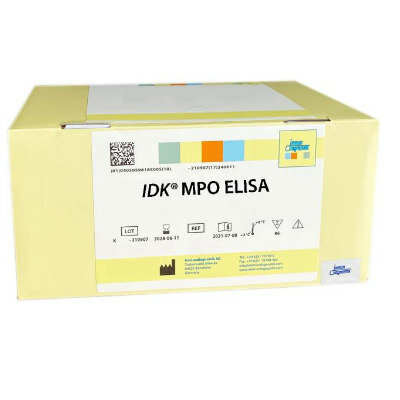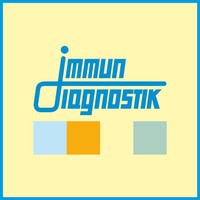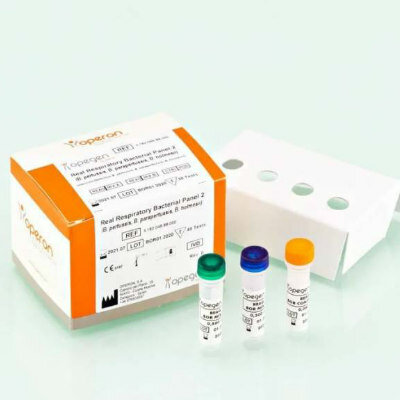Blood Biomarkers Help Diagnose Parkinson's Disease
|
By LabMedica International staff writers Posted on 05 May 2020 |
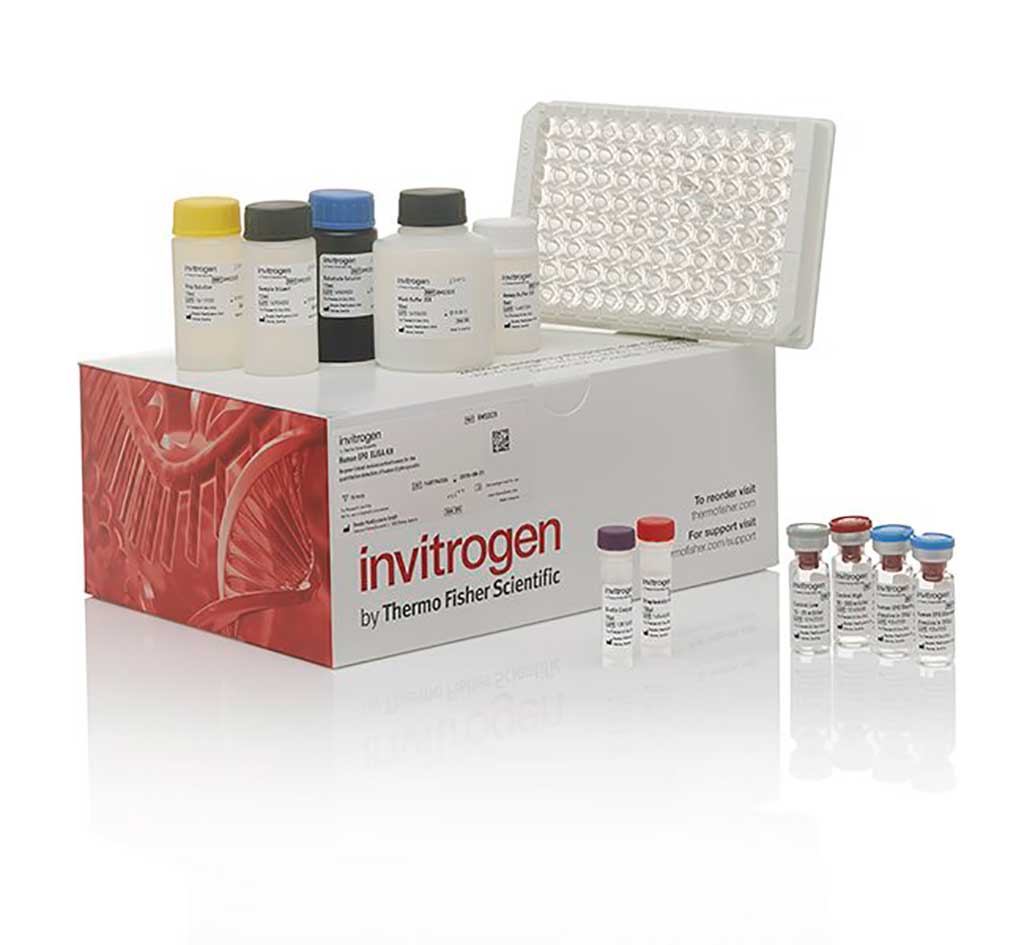
Image: The Clusterin Human ELISA kit (Photo courtesy of Invitrogen).
The identification of circulating biomarkers that closely correlate with Parkinson’s disease (PD) has failed several times in the past. A conventional pipeline for biomarker discovery usually contemplates the collection of clinical samples, such as blood, and their analysis by mass spectrometry.
However, clinical samples, in particular the case of plasma and serum, the primary source for biomarker discovery, are known to have a large dynamic range, which makes it difficult to reach the less abundant species. A translational approach has been conducted, allowing the evaluation of the plasma levels of two mitochondrial-related proteins, whose combination leads to a robust model with potential diagnostic value to discriminate the PD patients from matched controls.
Interdisciplinary scientists from the University of Coimbra (Coimbra, Portugal) examined blood plasma samples from 31 Parkinson’s patients, ages 65 to 86 and being followed at the Centro Hospitalar Cova da Beira (Covilhã, Portugal). They then compared these sample with 28 from matched controls, whose ages ranged from 55 to 83. The team started out by comparing proteins that are secreted by cells cultured in normal conditions, and in a setting of oxidative stress, an imbalance between the production and clearance of toxic reactive species that are harmful to cells, and which plays a key role in neurodegenerative diseases like Parkinson’s.
In total, their analysis retrieved 23 mitochondrial-related proteins that were differentially secreted by cells under these two conditions, including 19 proteins whose levels were significantly increased in the presence of oxidative stress, and four proteins with significantly decreased levels in this setting. This approach yielded a total of 98 proteins that were significantly different between patients and controls, but a review of mitochondrial-related proteins retrieved only two candidates, clusterin and the vacuolar protein sorting-associated protein 35 (VPS35). Levels of these two mitochondrial-related proteins combined were better than each single protein at discriminating patients from controls, showing an accuracy of 82.1%. The rate of incorrectly classified patients also dropped significantly when people with more advanced disease were examined.
Clusterin, VPS35, and GFP (the internal standard used in mass spectrometry analysis) levels were determined using ELISA commercial kits, namely Clusterin Human ELISA kit (Invitrogen, Carlsbad, CA, USA), Human Vacuolar protein sorting-associated protein 35 (VPS35) ELISA Kit (Abbexa, Cambridge, UK) and GFP ELISA Kit (Abcam, Cambridge, UK), respectively.
The authors concluded that an adaptation of a translational pipeline for biomarker selection was presented and transposed to neurological diseases. From the application of this adapted pipeline, two mitochondrial-related proteins were identified as potential candidates for Parkinson’s disease diagnosis. The study was published on April 3, 2020 in the journal Translational Neurodegeneration.
However, clinical samples, in particular the case of plasma and serum, the primary source for biomarker discovery, are known to have a large dynamic range, which makes it difficult to reach the less abundant species. A translational approach has been conducted, allowing the evaluation of the plasma levels of two mitochondrial-related proteins, whose combination leads to a robust model with potential diagnostic value to discriminate the PD patients from matched controls.
Interdisciplinary scientists from the University of Coimbra (Coimbra, Portugal) examined blood plasma samples from 31 Parkinson’s patients, ages 65 to 86 and being followed at the Centro Hospitalar Cova da Beira (Covilhã, Portugal). They then compared these sample with 28 from matched controls, whose ages ranged from 55 to 83. The team started out by comparing proteins that are secreted by cells cultured in normal conditions, and in a setting of oxidative stress, an imbalance between the production and clearance of toxic reactive species that are harmful to cells, and which plays a key role in neurodegenerative diseases like Parkinson’s.
In total, their analysis retrieved 23 mitochondrial-related proteins that were differentially secreted by cells under these two conditions, including 19 proteins whose levels were significantly increased in the presence of oxidative stress, and four proteins with significantly decreased levels in this setting. This approach yielded a total of 98 proteins that were significantly different between patients and controls, but a review of mitochondrial-related proteins retrieved only two candidates, clusterin and the vacuolar protein sorting-associated protein 35 (VPS35). Levels of these two mitochondrial-related proteins combined were better than each single protein at discriminating patients from controls, showing an accuracy of 82.1%. The rate of incorrectly classified patients also dropped significantly when people with more advanced disease were examined.
Clusterin, VPS35, and GFP (the internal standard used in mass spectrometry analysis) levels were determined using ELISA commercial kits, namely Clusterin Human ELISA kit (Invitrogen, Carlsbad, CA, USA), Human Vacuolar protein sorting-associated protein 35 (VPS35) ELISA Kit (Abbexa, Cambridge, UK) and GFP ELISA Kit (Abcam, Cambridge, UK), respectively.
The authors concluded that an adaptation of a translational pipeline for biomarker selection was presented and transposed to neurological diseases. From the application of this adapted pipeline, two mitochondrial-related proteins were identified as potential candidates for Parkinson’s disease diagnosis. The study was published on April 3, 2020 in the journal Translational Neurodegeneration.
Latest Immunology News
- Stem Cell Test Predicts Treatment Outcome for Patients with Platinum-Resistant Ovarian Cancer
- Machine Learning-Enabled Blood Test Predicts Immunotherapy Response in Lymphoma Patients
- Post-Treatment Blood Test Could Inform Future Cancer Therapy Decisions
- Cerebrospinal Fluid Test Predicts Dangerous Side Effect of Cancer Treatment
- New Test Measures Preterm Infant Immunity Using Only Two Drops of Blood
- Simple Blood Test Could Help Choose Better Treatments for Patients with Recurrent Endometrial Cancer
- Novel Analytical Method Tracks Progression of Autoimmune Diseases
- 3D Bioprinted Gastric Cancer Model Uses Patient-Derived Tissue Fragments to Predict Drug Response
- Blood Test for Fungal Infections Could End Invasive Tissue Biopsies
- Cutting-Edge Microscopy Technology Enables Tailored Rheumatology Therapies
- New Discovery in Blood Immune Cells Paves Way for Parkinson's Disease Diagnostic Test
- AI Tool Uses Routine Blood Tests to Predict Immunotherapy Response for Various Cancers
- Blood Test Can Predict How Long Vaccine Immunity Will Last
- Microfluidic Chip-Based Device to Measure Viral Immunity
Channels
Clinical Chemistry
view channel
‘Brilliantly Luminous’ Nanoscale Chemical Tool to Improve Disease Detection
Thousands of commercially available glowing molecules known as fluorophores are commonly used in medical imaging, disease detection, biomarker tagging, and chemical analysis. They are also integral in... Read more
Low-Cost Portable Screening Test to Transform Kidney Disease Detection
Millions of individuals suffer from kidney disease, which often remains undiagnosed until it has reached a critical stage. This silent epidemic not only diminishes the quality of life for those affected... Read more
New Method Uses Pulsed Infrared Light to Find Cancer's 'Fingerprints' In Blood Plasma
Cancer diagnoses have traditionally relied on invasive or time-consuming procedures like tissue biopsies. Now, new research published in ACS Central Science introduces a method that utilizes pulsed infrared... Read moreMolecular Diagnostics
view channel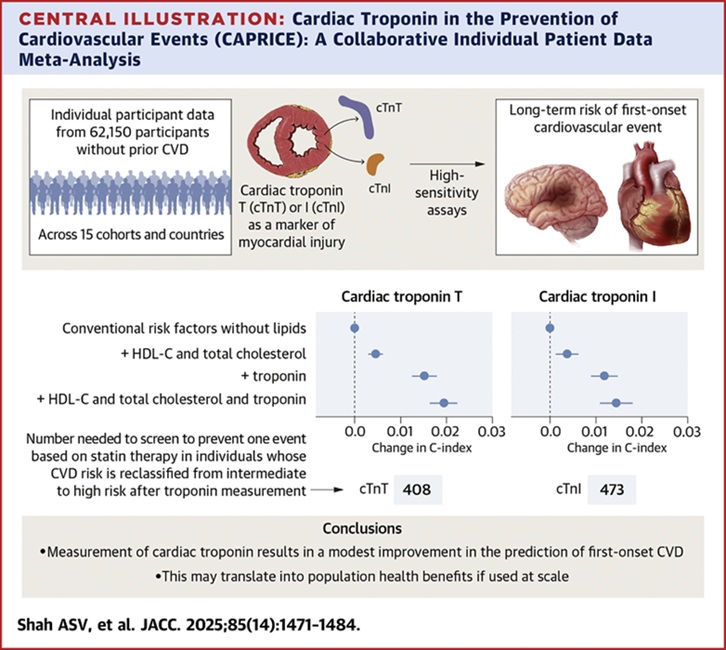
Simple Blood Test Improves Heart Attack and Stroke Risk Prediction
Troponin is a protein found in heart muscle cells that is released into the bloodstream when the heart is damaged. High-sensitivity troponin blood tests are commonly used in hospitals to diagnose heart... Read more
Blood Biomarker Test Could Detect Genetic Predisposition to Alzheimer’s
New medications for Alzheimer’s disease, the most common form of dementia, are now becoming available. These treatments, known as “amyloid antibodies,” work by promoting the removal of small deposits from... Read more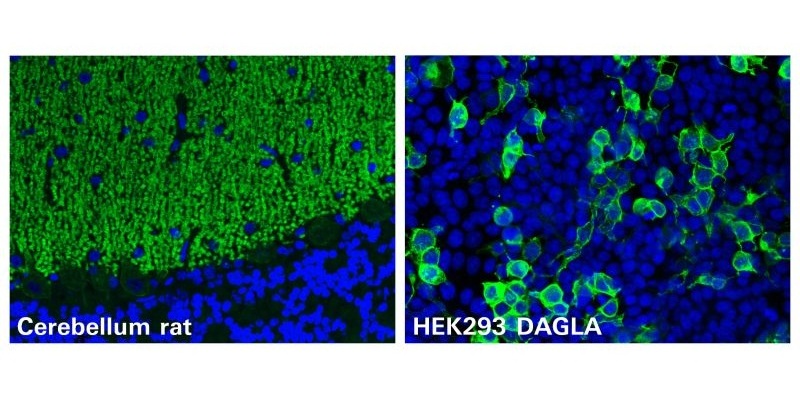
Novel Autoantibody Against DAGLA Discovered in Cerebellitis
Autoimmune cerebellar ataxias are strongly disabling disorders characterized by an impaired ability to coordinate muscle movement. Cerebellar autoantibodies serve as useful biomarkers to support rapid... Read more
Gene-Based Blood Test Accurately Predicts Tumor Recurrence of Advanced Skin Cancer
Melanoma, an aggressive form of skin cancer, becomes extremely difficult to treat once it spreads to other parts of the body. For patients with metastatic melanoma tumors that cannot be surgically removed... Read moreHematology
view channel
New Scoring System Predicts Risk of Developing Cancer from Common Blood Disorder
Clonal cytopenia of undetermined significance (CCUS) is a blood disorder commonly found in older adults, characterized by mutations in blood cells and a low blood count, but without any obvious cause or... Read more
Non-Invasive Prenatal Test for Fetal RhD Status Demonstrates 100% Accuracy
In the United States, approximately 15% of pregnant individuals are RhD-negative. However, in about 40% of these cases, the fetus is also RhD-negative, making the administration of RhoGAM unnecessary.... Read moreMicrobiology
view channel
Handheld Device Delivers Low-Cost TB Results in Less Than One Hour
Tuberculosis (TB) remains the deadliest infectious disease globally, affecting an estimated 10 million people annually. In 2021, about 4.2 million TB cases went undiagnosed or unreported, mainly due to... Read more
New AI-Based Method Improves Diagnosis of Drug-Resistant Infections
Drug-resistant infections, particularly those caused by deadly bacteria like tuberculosis and staphylococcus, are rapidly emerging as a global health emergency. These infections are more difficult to treat,... Read more
Breakthrough Diagnostic Technology Identifies Bacterial Infections with Almost 100% Accuracy within Three Hours
Rapid and precise identification of pathogenic microbes in patient samples is essential for the effective treatment of acute infectious diseases, such as sepsis. The fluorescence in situ hybridization... Read morePathology
view channel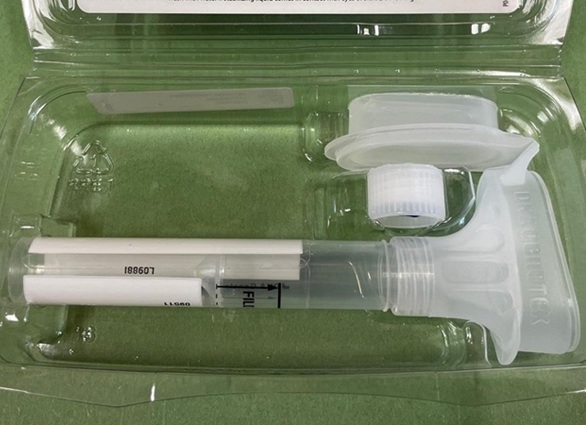
Spit Test More Accurate at Identifying Future Prostate Cancer Risk
Currently, blood tests that measure the level of a protein called prostate-specific antigen (PSA) are commonly used to identify men at higher risk for prostate cancer. This test is typically used based... Read moreDNA Nanotechnology Boosts Sensitivity of Test Strips
Since the Covid-19 pandemic, most people have become familiar with paper-based rapid test strips, also known as lateral flow immunoassays (LFIAs). These tests are used to quickly detect biomarkers that... Read more
Novel UV and Machine Learning-Aided Method Detects Microbial Contamination in Cell Cultures
Cell therapy holds great potential in treating diseases such as cancers, inflammatory conditions, and chronic degenerative disorders by manipulating or replacing cells to restore function or combat disease.... Read moreTechnology
view channel
Disposable Microchip Technology Could Selectively Detect HIV in Whole Blood Samples
As of the end of 2023, approximately 40 million people globally were living with HIV, and around 630,000 individuals died from AIDS-related illnesses that same year. Despite a substantial decline in deaths... Read more
Pain-On-A-Chip Microfluidic Device Determines Types of Chronic Pain from Blood Samples
Chronic pain is a widespread condition that remains difficult to manage, and existing clinical methods for its treatment rely largely on self-reporting, which can be subjective and especially problematic... Read more
Innovative, Label-Free Ratiometric Fluorosensor Enables More Sensitive Viral RNA Detection
Viruses present a major global health risk, as demonstrated by recent pandemics, making early detection and identification essential for preventing new outbreaks. While traditional detection methods are... Read moreIndustry
view channel
Cepheid and Oxford Nanopore Technologies Partner on Advancing Automated Sequencing-Based Solutions
Cepheid (Sunnyvale, CA, USA), a leading molecular diagnostics company, and Oxford Nanopore Technologies (Oxford, UK), the company behind a new generation of sequencing-based molecular analysis technologies,... Read more
Grifols and Tecan’s IBL Collaborate on Advanced Biomarker Panels
Grifols (Barcelona, Spain), one of the world’s leading producers of plasma-derived medicines and innovative diagnostic solutions, is expanding its offer in clinical diagnostics through a strategic partnership... Read more







